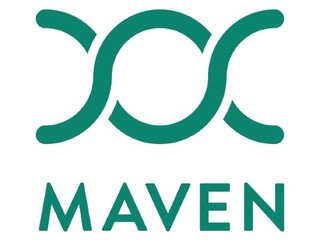
Telehealth in the age of coronavirus
Thanks to COVID-19, telehealth is experiencing a major boost. But will it last?

[Editor's note: Future of Behavioral and Mental Health with BetterHelp, Headspace, Ginger.io, Providence Hospitals, UnitedHealthcare Optum, Khosla Ventures, Oak HC/FT and more has become 4 virtual conferences! Register one time for all 4 events! REGISTER. We also have our In-Home Devices/Remote Care event on July 1. You can register for that HERE.]
In the last five years, the usage of telehealth services was far lower than the hype that surrounded it. A survey from JD Power conducted last July found that only 1 in 10 patients took advantage of such remote-care services.
Now that's all changing due to the coronavirus outbreak, which, thanks to the risk of being exposed, has led to an inability for many people to go out and see their doctor in person. So, telemedicine is finally having its moment: Teladoc, for example, reported last month that patient visit volume spiked 50 percent in one week to as much as 15,000 visits requested per day.
In all, Forrester analysts now estimate that coronavirus related virtual visits alone could end up at over 900 million this year. In terms of general care, the expectation is that visits will top 200 million this year, for a combined one billion virtual visits in 2020. There were 36 million virtual visits in 2019.
This is obviously a big change that's happening in a very small amount of time and it will no doubt upend the entire space. I spoke to CEOs of four companies that offer telemedicine and virtual care to get their thoughts on what’s happening, how they are helping to relieve some of the increased burden on physicians and what they believe the future of telemedicine will look like when the dust settles.
The benefit of telemedicine during a crisis
To understand the rise in telemedicine, it’s probably helpful to understand these services weren’t being used before, a big part of which is that, despite many people having access to them, most patients weren’t aware of it, said Dr. Blake McKinney, co-founder and chief medical officer at CirrusMD, a chat-first virtual care solution.
Another factor is that people are simply more comfortable going to the doctor the way they always have, despite all the inefficiencies in that system. Or, as McKinney put it, “The only force more powerful than convenience is familiarity.”
“When you walk into your neighborhood urgent care, you know what you’re going to get. You’re confident that you’ll be seen by a physician in your community who has a license and their credibility is attached to that group, practice or hospital. There’s a trust. With telemedicine options, people maybe haven't heard of the telemedicine company that is being offered to them; it’s branded as something that they're not familiar with and they don't have an attachment to and, therefore, there’s not a real reason to trust something like that,” he said.
Part of what’s happening now is that people are finally discovering that they have access simply because they have no other choice; going into a doctor’s office at the moment is too risky, but patients still need care, whether it be for coronavirus or something unrelated. Telemedicine has become their only option.
“What most people are realizing is they’ve had a telemedicine benefit all along, either through their insurance company or their employer, and now, all of the sudden, they’re looking for it. Fears about going in to see a doctor are driving people to look for other ways to get their prescriptions, to have their problem considered by an expert, and so what they’re finding are solutions that have existed for many years that have never broken through into the mainstream,” McKinney said.
Ultimately, telehealth is going to play an essential role in flattening the curve for COVID-19 by keeping doctors and patients from interacting face to face, said Michelle Davey, CEO and co-founder of Wheel, a company that connects physicians to telemedicine services. That is going to make healthcare safer for both of them by ensuring that nobody is unnecessarily exposed to coronavirus.
“Telemedicine can help prevent sick people from coming into contact with others, enable clinicians to help more people than they would be able to reach in a brick and mortar setting, and ease the burden on the healthcare system by treating patients who are sheltering in place for conditions unrelated to COVID-19,” she said.
“Even in the shadow of a pandemic, people’s daily health concerns do not simply disappear, and the need for rapid, qualified medical care is as pressing as ever, particularly given the current realities of sheltering-in-place, social distancing, and the strain on brick-and-mortar clinics and provider networks. Telehealth fills that void, connecting patients with licensed clinicians when and where they need them.”
Taking the strain off the doctor
With these increases in telemedicine inevitably comes more demand for doctors, and telehealth companies are now being forced to fill that gap. Telemedicine provider 98point6, for example, recently saw a 200 percent increase in volume thanks to the coronavirus, forcing the company to raise money just so it could triple the number of physicians on its platform.
Wheel is also seeing a “huge surge” of clinicians who want to join the platform thanks to the effects of the coronavirus, Davey told me.
“Clinicians are eager to find a way to contribute their expertise to a national crisis, to obtain additional training via the CDC-guided COVID-19 training Wheel provides, and to supplement their incomes while their practices are shuttered during this crisis,” she said.
“This means mobilizing those experiencing economic hardships, those needing to work at home for reasons of quarantine or otherwise, and for those wanting to extend their expertise and support as broadly as possible. We’re even establishing partnerships with provider groups of clinicians who haven’t traditionally been on the front lines of virtual care, like surgeons or other sub-specialties that want to get involved.”
Even with the increase in doctors, the influx of patients is still “placing unprecedented demands on healthcare professionals that are on the front lines of this crisis,” she said and that requires additional steps to take some of the burden off of them.
One of the ways that telehealth services are attempting to assist physicians with the increased workload is through additional training; for example, Maven, a virtual clinic dedicated to healthcare for women and families, is providing its doctors with COVID-specific training, as well as training that is geography specific, so doctors can more easily direct their patients to the correct testing centers.
“It’s not only training on COVID-specific issues, but then as we’re rolling out health plans and doing emergency roll outs to health plans employers or states, we’re able to do that specific training as well,” said Maven founder and CEO Kate Ryder.
“Part of it is just knowing where all the testing centers are for per geography, but then the COVID training, it’s the way that hospitals are getting briefed and how they’re training their workers to treat patients coming in with COVID, what questions to ask them, it’s been put out by the CDC so we’re following all guidelines delivered by the CDC, the American Academy of Pediatrics, the American Academy of Obstetricians and Gynecologists.”
Heal, a provider of doctor house calls that launched its own telemedicine service last year, is taking an even more drastic step in preventing doctor burnout: it is actually limiting the number of patients each doctor can see per day.
“We’re not allowing our doctors to take more than three telemedicine consults per hour, and we’re not allowing them to take more than 20 a day, maybe 25, but that’s in a 12 hour day. We don't want them to be burned out,” co-founder and CEO Nick Desai explained.
“Our doctors still get 14 days a month off, some of them choose to work more because they want to make more money, and we let them do that on a case by case basis but, by and large, they get 14 days a month off. A fresh doctor with a fresh mind is the only good way to deliver care.”
To keep with the increased demand, the company has had to increase the number of doctors on its platform by about 10 percent in the last two weeks.
The future of telemedicine
In the end, the big question is, when the dust settles, and coronavirus is finally a thing of the past, or at least much less of a threat than it is now, what happens then?
There seem to be two schools of thought on how it's going to go: either that people who now recognize the benefits of telemedicine will demand more of it going forward, or that this is situational, and that people will go back to seeing their doctor again in person once they're able to.
Ryder, for example, believes that the coronavirus will have a significant impact on telemedicine, with not only patients discovering how convenient it is, but the doctors as well.
“Given that more and more people are using telehealth right now, what we see from our own members is that sometimes it takes a lot to get someone to try it but then, once they do, they realize how convenient and easy it is. You don't have to miss work or take a half a day to go to the doctor, you can connect to someone really simply online. That's just in general consumer behavior has changed, there’s a lot more who have tried it and see how convenient it is,” she said.
“More fundamentally, doctor practices around the country are now emergency rolling out telehealth for their own practices, and there’s been regulation that’s been lifted to allow doctors to use regular old video conferencing services, even if they’re not HIPAA compliant, so it’s not even from the patient’s side but from the physician and health system side it’s going to be more integral into physician workflow with their patients, because all physicians are now using it.”
McKinney also acknowledged that people are going to want more telemedicine when this is all over, and that he personally would like to see healthcare take a virtual-first approach, but he also doubted whether the system would really be able to change enough to provide it to them.
“The healthcare delivery system has traditionally not been in the telemedicine space and now they’re scrambling to find a way to do it. It’s currently happening on an unstructured format on FaceTime and Skype, and that’s not going to be a long term solution. In order to participate and to meet consumer demand, the health systems are going to have to solve for something that they’ve been historically unwilling to solve for, which is how to deliver a valuable and delightful member experience,” he said.
“I'm skeptical that they are going to be able to provide that. You have to remember that the hospital and the medical groups that they own, are businesses, and they’re very old businesses. They've been delivering their services in the same way for a very long time, and billing insurance and collecting co-pays in the same way for a very long time. It’s for that reason that they’ve been reluctant to embrace telemedicine, due to the historical barriers, such as reimbursement inequity and just the fact that patients are willing to drive in and see their doctors in person.”
Even if telemedicine catches on the way some suspect, though, Desai said he still envisions a world where the doctor/patient relationship is fundamentally based on face-to-face contact.
“There are these kinds of watershed moments: 9/11, the 2008 market crash. During the California drought people go take shorter showers and people stop watering their lawn. There’s a lot of elasticity in human beings, for good and for bad. People go home, people go back to their normal ways. So, will telemedicine have a continued uptick? I think there will be some uptick, I think people who have found it useful will use it,” he said.
“But, I do think that, for healthcare, there’s an irreplaceable value to a doctor interacting with a patient in person, face-to-face, in their home environment. Because the home environment is the only place where the doctor can see the social determinants of health, which affect up to 80 percent of health outcomes. Those social determinants are critical to caring for chronic disease patients: the food securities, the alcohol abuse, the smoking, what’s in the pill bottles, what are the fall risks, is there abuse in the home. These are things that become apparent when a person goes to the home, when a doctor goes to the home. They cannot be seen with that.”
(Image source: dhat.com)
Related Companies, Investors, and Entrepreneurs
Heal
Startup/Business
Joined Vator on
Heal brings technology innovation to re-humanize the practice of medicine in a way that is fulfilling for doctors and patients alike.
Heal brings a licensed, background-checked pediatrician or family doctor to you, on-demand, on your schedule, for $99 or for an in-network co-pay with select insurance plans. Great doctors are available in Los Angeles, Orange County, San Francisco, Silicon Valley and San Diego from 8am to 8pm, seven days a week.
CirrusMD Inc.
Startup/Business
Joined Vator on
CirrusMD partners health plans to create happier, healthier and more engaged members by connecting them to high-quality care conversation. CirrusMD’s chat-first virtual care platform enables continuous access in seconds to board-certified physicians across 50 states from any web-enabled device, providing members with seamless care conversation that happens on their terms. Designed to deliver an unparalleled user experience and barrier-free access, the CirrusMD platform drives average member utilization rates of up to triple telehealth industry averages. CirrusMD has partnered with the nation’s leading payers and integrated delivery networks to help millions of members and patients access extraordinary virtual care. Founded in 2012 and headquartered in Denver, Colorado, CirrusMD is led by co-founder and Chief Executive Officer Andy Altorfer and co-founder and Chief Medical Officer Blake McKinney, M.D.

Nick Desai
Joined Vator on
Co-Founder/CEO of Heal. Serial Entrepreneur, Jubilant Father of Three and Food Lover.Related News


Today's entrepreneur: Nick Desai

Maven raises $45M for its healthtech platform for women and families

How to save money during the coronavirus







